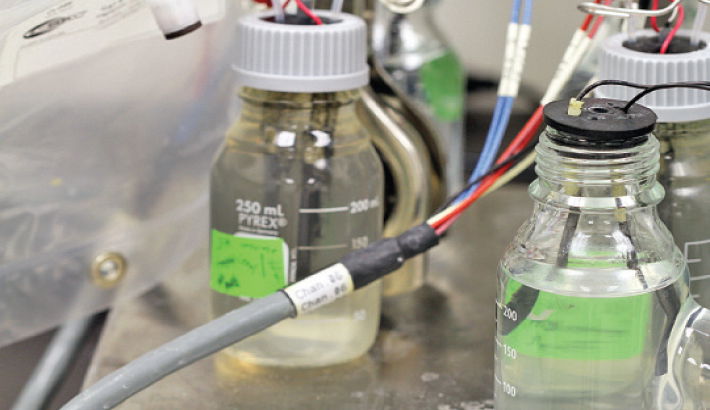Microbial Fuel Cell: A Sustainable Technology For Renewable Energy Generation | Abdullah Al Moinee

Microbial Fuel Cell: A Sustainable Technology For Renewable Energy Generation
Abdullah Al Moinee
[ Origin (Excerpted from): essenceofengineering.blogspot.com/2019/06/microbial-fuel-cell-sustainable.html ]
Environment, energy, and engineering can make the earth elegant together by dint of sustainable development. Sustainable development ensures the environmental safety to sustain the renewable energy. The world is on the verge of energy crisis, pollution, and environmental instability. Renewable energy source as an alternative fuel is to be emerged and harnessed for the stability of climate and environment to deal with the descending level of existing sources. Production of electrical energy utilizing micro-organisms through Microbial Fuel Cell (MFC) is one such renewable and sustainable technology that is considered to be one of the most efficient and carbon neutral energy sources right now.
A microbial fuel cell (MFC) is a bio-electrochemical device that harnesses the power of microbes (bacteria, algae, fungi etc.) during cellular respiration to convert organic substrates directly into electrical energy. Cellular respiration is a collection of metabolic reactions that cells use to convert nutrients into adenosine triphosphate (ATP) which fuels cellular activity. At its core, the MFC is a fuel cell, which transforms chemical energy into electricity using oxidation-reduction reactions. The key difference of course is in the name, microbial fuel cells rely on living biocatalysts to facilitate the movement of electrons throughout their systems instead of the traditional chemically catalyzed oxidation of a fuel cell at the anode and reduction at the cathode.
In early twentieth century Botany professor at the University of Durham, M. C. Potter, first came up with the idea of using microbes to produce electricity in 1911. The overall reaction in MFC can be considered an exothermic redox reaction according to his idea. Potter managed to generate electricity from Escherichia coli, but the work received little coverage. While Potter succeeded in generating electricity from E. coli, his work went unnoticed for another two decades before Barnet Cohen created the first microbial half fuel cells in 1931. By connecting his half cells in series, he was able to generate a meager current of 2 milliamps. By 1999, researchers in South Korea discovered a MFC milestone. B.H. Kim et al developed the mediator-less MFC which greatly enhanced the MFC's commercial viability, by eliminating costly mediator chemicals required for electron transport. The principle of MFC is to collect the electrons released by bacteria as they respire. This leads to two types of MFCs: mediator and mediator-less. Prior to 1999, most MFCs required a mediator chemical to transfer electrons from the bacterial cells to the electrode. Mediators like neutral red, humic acid, thionine, methyl blue, and methyl viologen were expensive and often toxic, making the technology difficult to commercialize. Research performed by B. H. Kim et al in 1999 led to the development of a new type of mediator-less MFC. The Fe (III) reducer ‘Shewanella putrefaciens’, unlike most MFC bacteria at the time, were electrochemically active. This bacteria had the ability to respire directly into the electrode under certain conditions by using the anode as an electron acceptor as part of its normal metabolic process. Bacteria that can transfer electrons extracellularly through their pili, are called exoelectrogens. The direct communication of exoelectrogens like Geobacter species that are capable of oxidizing organic compounds and their efficiency in transferring electrons to electrodes via highly conductive filaments were considered remarkable in MFC research.
However the most foreseeable application of an MFC is in waste water treatment. Microbes have affinity to sewage, and the conditions of a waste water treatment plant are ideal for the types of bacteria that can be used in an MFC.
Well, MFC has been emerged as a promising, yet challenging technology to extract energy from different sources and turn them into electricity. Despite the rapid progress, there are some areas in which further research needs to be done to overcome the constraints associated with MFC. The major challenge in the application of MFCs is its low power density. Provided the biological under-standing increases, the electrochemical technology advances and the overall accessories of MFC construction and cost consideration for a large scale decrease, this technology might qualify as a new core technology for generating bioelectricity from bio-waste in years to come to open a greener and sustainable threshold of renewable energy for the earth.
Moinee, A. Al. "Microbial Fuel Cell: A Sustainable Technology For Renewable Energy Generation” The Daily Sun. 9(43). 06 Dec. 2018. The Hood. 8(34).
